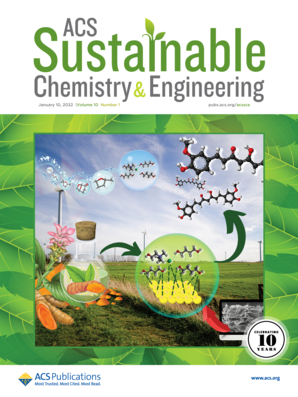β/β″-Al2O3陶瓷固体电解质实现锂金属电池的全面升级
IF 7.1
1区 化学
Q1 CHEMISTRY, MULTIDISCIPLINARY
引用次数: 0
摘要
传统的β/β″-Al2O3陶瓷填充固态电解质(sss)通过占据导电平面上的阳离子空位和间隙位置,可以根据两种离子传输机制定制离子电导率行为。在这项工作中,我们提出了一种静电纺丝方法来合成三维(3D)交联PAN纳米纤维框架和多相Al2O3陶瓷(β)填料,协同增强锂金属电池和基于peo的固态电解质(表示为PL-PB sse)。由于Li+传输通道连续,机械强度增强,界面相容性优越,所制备的PL-PB sss具有均匀的锂沉积,高离子电导率(0.22 mS cm-1),大Li+转移数(0.66)和宽电化学稳定窗口(5.07 V)。组装的Li||锂对称电池具有PL-PB SSE,在0.1 mA cm-2和0.1 mAh cm-2下900 h内具有优异的循环稳定性,滞回电压过电位较低,为16 mV。在1.0℃下循环450次后,添加了PL-PB SSE的全固态Li||LFP全电池的容量衰减率比不添加β粉末的PL-P SSE低0.003%(0.04%)。该策略为扩大多相氧化铝陶瓷共存在全固态锂金属电池中的实际应用提供了新的见解。本文章由计算机程序翻译,如有差异,请以英文原文为准。

Comprehensively Upgraded Lithium-Metal Batteries Achieved by the β/β″-Al2O3 Ceramic Solid Electrolyte
The conventional β/β″-Al2O3 ceramic-filled solid-state electrolytes (SSEs) can tailor ionic conductivity behaviors according to two ion-transport mechanisms by occupying cation vacancies and interstitial positions in the conductive plane. In this work, we present an electrospinning method to synthesize a three-dimensional (3D) cross-linked PAN nanofiber framework and multiphase Al2O3 ceramic (β) fillers that synergistically reinforced lithium-metal batteries and PEO-based solid-state electrolytes (denoted as PL–PB SSEs). Due to the continuous Li+-transport channels, enhanced mechanical strength, and superior interfacial compatibility, the resulting PL–PB SSEs exhibited uniform lithium deposition, high ionic conductivity (0.22 mS cm–1), large Li+ transference number (0.66), and wide electrochemical stability window (5.07 V) at 45 °C. The assembled Li||Li symmetric cell with PL–PB SSE delivered excellent cycling stability at 0.1 mA cm–2 and 0.1 mAh cm–2 over 900 h with a lower hysteresis voltage overpotential of 16 mV. The all-solid-state Li||LFP full cell with PL–PB SSE showed a lower capacity decay of 0.003% per cycle after 450 cycles at 1.0C than that of PL–P SSE without β powders (0.04%). This strategy provides new insights for broadening the practical applications of multiphase Al2O3 ceramic coexistence in all-solid-state lithium-metal batteries.
求助全文
通过发布文献求助,成功后即可免费获取论文全文。
去求助
来源期刊

ACS Sustainable Chemistry & Engineering
CHEMISTRY, MULTIDISCIPLINARY-ENGINEERING, CHEMICAL
CiteScore
13.80
自引率
4.80%
发文量
1470
审稿时长
1.7 months
期刊介绍:
ACS Sustainable Chemistry & Engineering is a prestigious weekly peer-reviewed scientific journal published by the American Chemical Society. Dedicated to advancing the principles of green chemistry and green engineering, it covers a wide array of research topics including green chemistry, green engineering, biomass, alternative energy, and life cycle assessment.
The journal welcomes submissions in various formats, including Letters, Articles, Features, and Perspectives (Reviews), that address the challenges of sustainability in the chemical enterprise and contribute to the advancement of sustainable practices. Join us in shaping the future of sustainable chemistry and engineering.
 求助内容:
求助内容: 应助结果提醒方式:
应助结果提醒方式:


